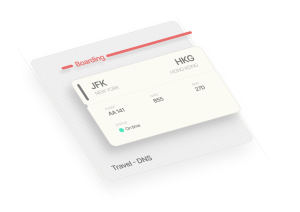Multi-layered calendars
A more expressive interface for time
Julian LehrSummary
Multi-Layered Calendars challenge the traditional view of calendars as 2D grids filled with mutually exclusive blocks of time. In reality, many activities don’t cancel each other out — they coexist, overlap, or inform one another. By introducing layers, calendars can represent time in three dimensions, where different types of events — tasks, meetings, habits, travel, talking points, or background data — each have their own space and semantics.
This shift isn’t just visual — it’s conceptual. Most productivity tools treat note-taking, scheduling, task management, and communication as separate domains. But these activities are deeply entangled. Tasks can live in calendars, but not all calendar events are tasks. Different types of events carry different expectations: a meeting, a reminder, and a deep work block shouldn’t look or behave the same.
By layering event types and aligning them with their actual properties, the calendar becomes a more expressive, context-rich interface for time. It opens the door to new use cases — like layering in health, media, journaling, or sensor data — transforming the calendar from a scheduling tool into a temporal operating system for everyday life.
You would expect technologists and entrepreneurs to be intensely focused on perfecting such a magical time travel device, but surprisingly, that has not been the case. Our digital calendars turned out to be just marginally better than their pen and paper predecessors. And since their release, neither Outlook nor Google Calendar have really changed in any meaningful way. Julian Lehr
Key concepts
- Time Is not flat Traditional calendars treat time as a 2D grid of exclusive blocks, but in reality, not all events compete. Some require your full presence at a specific time and place (like a meeting), while others do not (like a reminder or a background task). A layered approach reflects this difference and allows time to be managed more accurately.
- Not all events are equal Calendars today treat every entry the same. But tasks, meetings, blocked time, and habits have different attributes, urgencies, and constraints. A calendar should reflect those distinctions natively — both in how events look and how they behave.
- Context through overlap Seeing different types of events in relation to one another creates clarity. Layering in workouts, sleep, or focus time alongside meetings can reveal patterns — like the causes of stress or when you're most productive — and support better time-related decisions.
- Calendars as extensible platforms With support for multiple event types and layers, the calendar becomes an open platform for time-based data. New use cases — journaling, wellness tracking, media history — can be added as dedicated layers, tailored to how you live and work.
Multi-Layered Calendars reframes the calendar as more than a scheduling tool—it becomes a dynamic interface for how we think about time. By differentiating event types, layering them meaningfully, and breaking down artificial barriers between tools, it creates space for a more contextual, expressive, and personally meaningful relationship with our time.

This idea was originally published by Julian Lehr as Multi-Layered Calendars.
Big Idea Initiative is all about making connections, and sharing knowledge, thoughts, and ideas that support deep thinking and collaboration. Our goal is to create a space that sparks thinking and conversations among people whose ideas might benefit each other, even if they’re working on completely unrelated topics. We think that pushing back the limits of possibility will come as a result of the connections that diverse collaborators make together. Identifying these connections will bring the big ideas our world needs.
We need your help! If you…
- have questions or feedback about this work
- want to improve, develop, or add to this idea
- want to sponsor a prototype of this idea
we invite you to contact us: hello@bigideainitiative.org.